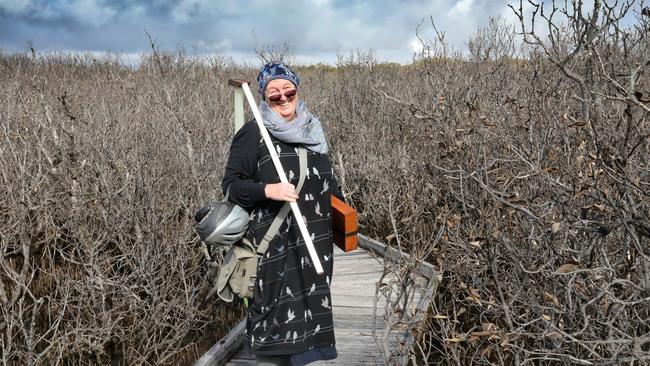State government to test groundwater salt levels at St Kilda
More than 12 months after residents expressed major concerns their trees were dying from high salt levels, a government investigation into the issues will finally begin.

North & North East
Don't miss out on the headlines from North & North East. Followed categories will be added to My News.
The state government will install groundwater testing wells within the St Kilda township in response to ongoing concerns that a major ecological disaster could now wreck the town’s infrastructure.
Correspondence, viewed by The Messenger, was this week distributed to St Kilda residents informing them of the move which was described as one that would enable continued monitoring of salt migration in the area.
As a result of the monitoring, the correspondence indicated, the government and Salisbury Council would be able to determine the risk to the town’s infrastructure and what remedial actions would be required.
Residents Kevin and Marilyn Collins said they expected that determination to be damning and indicative of long-term impacts of leaking salt fields that had already wiped out parts of the St Kilda mangroves.
The couple has lived at St Kilda for more than 30 years and has noticed the significant impact of high salinity levels on the surrounding land, which included, they said, the death of trees on their property.


“What we’re concerned for is if the salt water continues to flood in under the town it could wipe out the rest of the mangroves,” Mr Collins said.
“Should it go under the town it would kill all the trees and plants in town – it would be absolute desolation.
“If it’s not managed properly it could wipe out the whole of the mangroves this side of the gulf.”
Mr Collins said there were concerns the salinity level of the water was so high it was even damaging and corroding the concrete on residents’ septic tanks.
Salisbury Council deputy mayor Chad Buchanan in June last year wrote to then-Energy and Mining Minister Dan van Holst Pellekaan after observing what he thought to be significant salt-related impacts on the township.
His letter came two days after the council was presented to on the impacts of salt on the mangroves, but queried whether the same information had been investigated about the township itself.

Mr Buchanan then moved a motion at the council to note “with concern” salt levels were affecting groundwater at the northernmost point of the town, and trees throughout the town were “sick and dying”.
Mr van Holst Pellekaan, the Energy and Mining Department and the Environment Protection Authority were asked in April last year about concerns for trees and vegetation on council and private land but did not address those questions.
A department spokesperson said a co-ordinated response was under way.
With the latest information that testing would commence, more than 12 months after it was requested, Mr Buchanan said it was a sorely needed progression.
“I welcome the Energy and Mining Department decision to install the monitoring stations, although this is now occurring over a year later from when I formally wrote,” he said.
“It’s a relief to see the current government is taking this issue seriously.
“I will continue to fight alongside … local residents who have experienced first hand the impact of this unmitigated disaster.”




